Figures & data
Table 1. Characteristics of three study groups.
Figure 1. Time-density plot of dementia symptoms reported in clinical records of people with diagnosed dementia. The mean time of onset of a symptom is plotted against the prevalence of that symptom. Dashed lines represent the mean time dementia was first suspected −5.7 years before diagnosis – and the time of diagnosis, respectively. Symbols: ↓, decrease; ↑, increase. Abbreviation: ADL, activities of daily living.
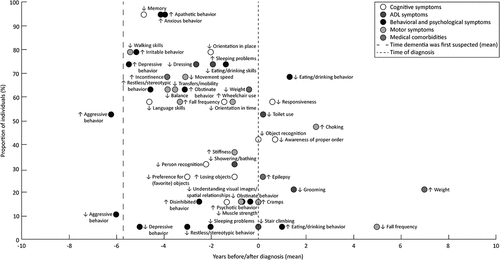
Figure 2. Prevalence of cognitive symptoms per group: no dementia (SPI(M)D), questionable dementia (SPI(M)D + QD) and diagnosed dementia (SPI(M)D + D). From left to right, symptoms are presented from most to least frequently reported for those with diagnosed dementia. Chi-squared tests were used to identify differences between groups. Symbol: *p <0.05. Abbreviation: SPI(M)D, severe/profound intellectual (and multiple) disabilities.
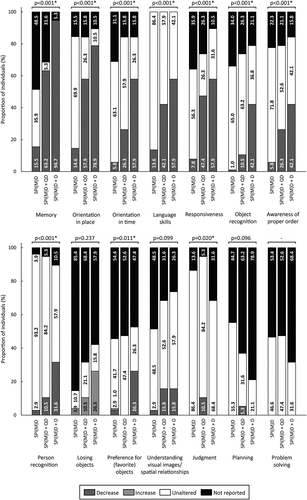
Figure 3. Prevalence of activities of daily living (ADL) symptoms per group: no dementia (SPI(M)D), questionable dementia (SPI(M)D + QD) and diagnosed dementia (SPI(M)D + D). From left to right, symptoms are presented from most to least frequently reported for those with diagnosed dementia. Chi-squared tests were used to identify differences between groups. Symbol: *p <0.05. Abbreviation: SPI(M)D, severe/profound intellectual (and multiple) disabilities.
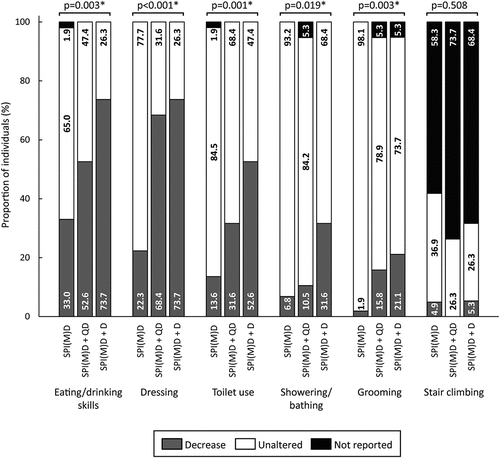
Figure 4. Prevalence of behavioral and psychological symptoms per group: no dementia (SPI(M)D), questionable dementia (SPI(M)D + QD) and diagnosed dementia (SPI(M)D + D). From left to right, symptoms – either decrease or increase – are presented from most to least frequently reported for those with diagnosed dementia. Chi-squared tests were used to identify differences between groups. Symbol: *p <0.05. Abbreviation: SPI(M)D, severe/profound intellectual (and multiple) disabilities.
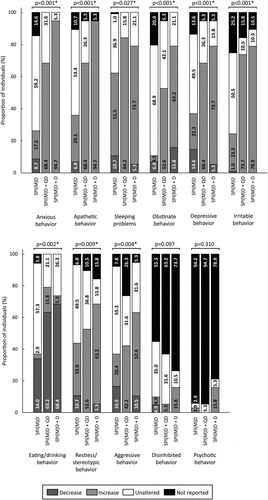
Figure 5. Prevalence of motor symptoms per group: no dementia (SPI(M)D), questionable dementia (SPI(M)D + QD) and diagnosed dementia (SPI(M)D + D). From left to right, symptoms – either decrease or increase – are presented from most to least frequently reported for those with diagnosed dementia. Chi-squared tests were used to identify differences between groups. Symbol: *p <0.05. Abbreviation: SPI(M)D, severe/profound intellectual (and multiple) disabilities.
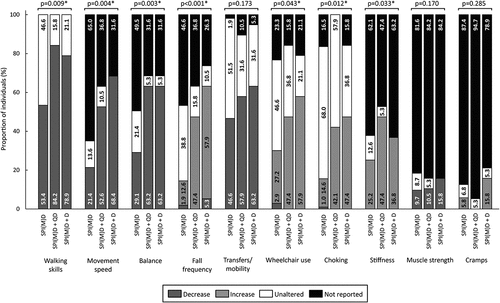
Figure 6. Prevalence of medical comorbidities per group: no dementia (SPI(M)D), questionable dementia (SPI(M)D + QD) and diagnosed dementia (SPI(M)D + D). From left to right, symptoms – either decrease or increase – are presented from most to least frequently reported for those with diagnosed dementia. Chi-squared tests were used to identify differences between groups. Symbol: *p <0.05. Abbreviation: SPI(M)D, severe/profound intellectual (and multiple) disabilities.
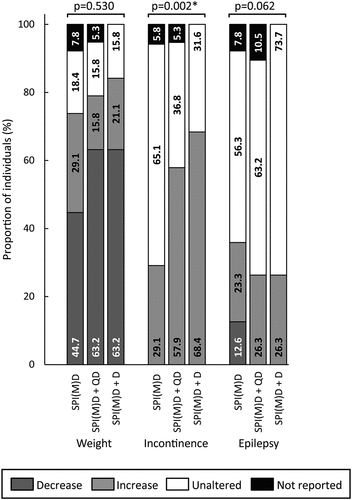
Table 2. Number of symptoms per domain.
Table 3. Predictive values of the number of symptoms per domain for the development of dementia.
